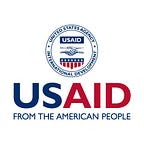An Anchor in the Storm
U.S. Food Assistance Helps Syrian Refugees Regain Stability
Syria’s brutal civil war is now in its seventh year. The UN Refugee Agency estimates 13 million people in Syria are suffering from violence, displacement or lack of access to basics like food. Another 5.6 million people have fled Syria to seek safety in neighboring countries.
U.S. emergency food assistance is helping millions of people in Syria and Syrian refugees in Egypt, Iraq, Jordan, Lebanon and Turkey to get by.
Syria
USAID emergency food assistance has reached approximately 3 million people inside Syria. We provide internally displaced people with ready-to-eat rations and other vulnerable Syrians with bread and food baskets.
Turkey
Turkey hosts 3.6 million registered Syrian refugees, more than any country. USAID and the World Food Program (WFP) provide Syrian refugees in Turkey with electronic food vouchers, or e-cards, which provide life-saving nutrition and a sense of belonging for children like Ahmad and his two brothers. Their family can now buy their favorite vegetable — corn — and other nutrient-rich foods. USAID provided e-card food assistance to some 150,000 Syrians across 10 Turkish camps last year. Since 2012, e-cards have injected $386 million into the local economy, helping both refugees and host communities.
Lebanon
Rajaa, a Syrian refugee and mother of six in Lebanon, takes pride in feeding her family traditional Syrian recipes. But it’s challenging in an environment where basic needs are a luxury. With WFP’s e-card program, refugees in Lebanon can access more than 500 shops and Rajaa can buy everything she needs to make Syrian meals, a comfort to her family in difficult circumstances. With USAID support, WFP reached approximately 680,000 Syrian refugees with e-cards last year, injecting an estimated $1 billion into the Lebanese economy, helping refugees and creating jobs and revenue to ease the burden on host communities.
Jordan
In Jordan, USAID and WFP introduced cutting-edge technology — iris scans to identify refugees receiving e-cards — for the first time in the history of humanitarian assistance. This high-tech approach enhances refugee safety, increases program efficacy and mitigates fraud. With USAID, WFP reached 500,000 refugees in Jordan last year with e-cards and in-kind food distributions. The program works with more than 200 partner shops, helping to create jobs and generate tax revenue and other benefits for the local economy.
Iraq
In Iraq, with high levels of conflict and internal displacement, WFP’s e-card program is crucial in giving Syrian refugees access to food without taxing the local economy. Last year, WFP provided refugees in nine camps in northern Iraq with e-cards for food. Today WFP reaches 56,000 Syrian refugees in Iraq with food assistance each month.
Egypt
Syrian refugees in Egypt once faced a long, arduous journey to reach food distribution sites. The cost and time required to travel jeopardized safety and financial security for this already vulnerable community. Today, with USAID support, WFP’s e-card program helps Syrian refugees in Egypt buy food in 50 local markets, reducing travel and risk. WFP has reached more than 75,000 Syrian refugees in Egypt with e-cards for food, injecting $116 million into the local economy.
About this Story
Katey Schein Prudhomme is the Middle East team lead for USAID’s Office of Food for Peace. Follow us on Twitter @USAIDFFP.
